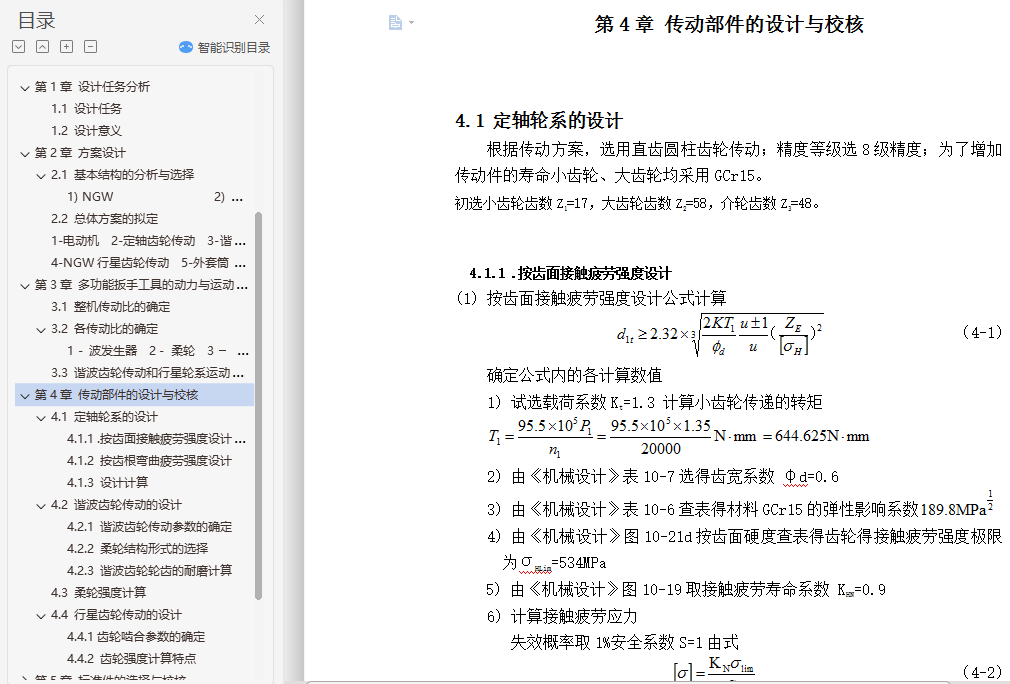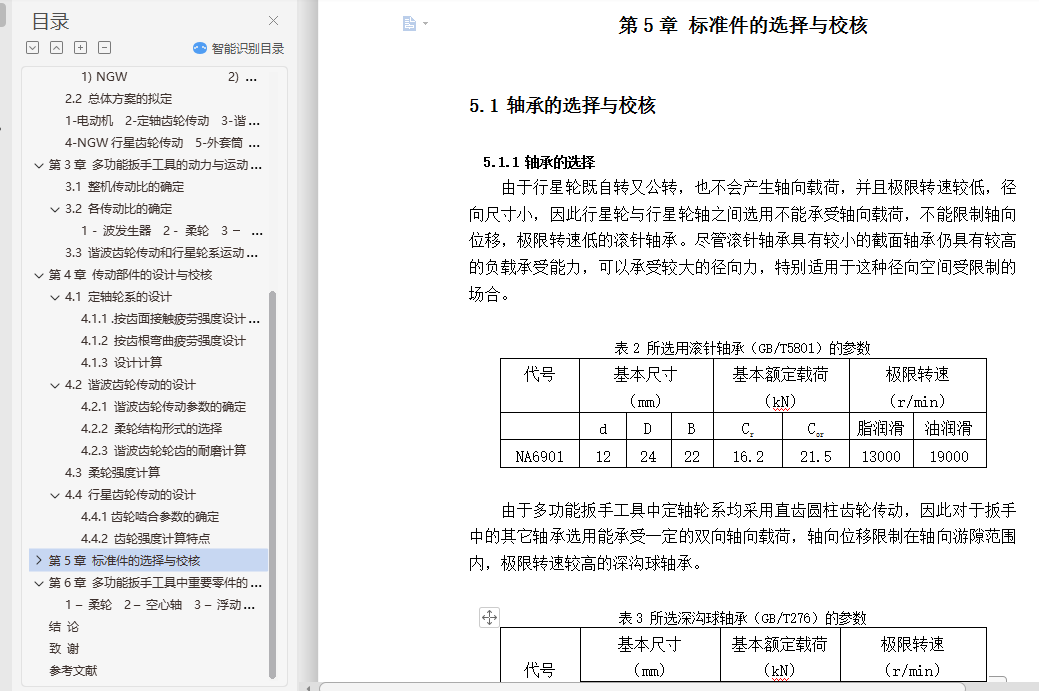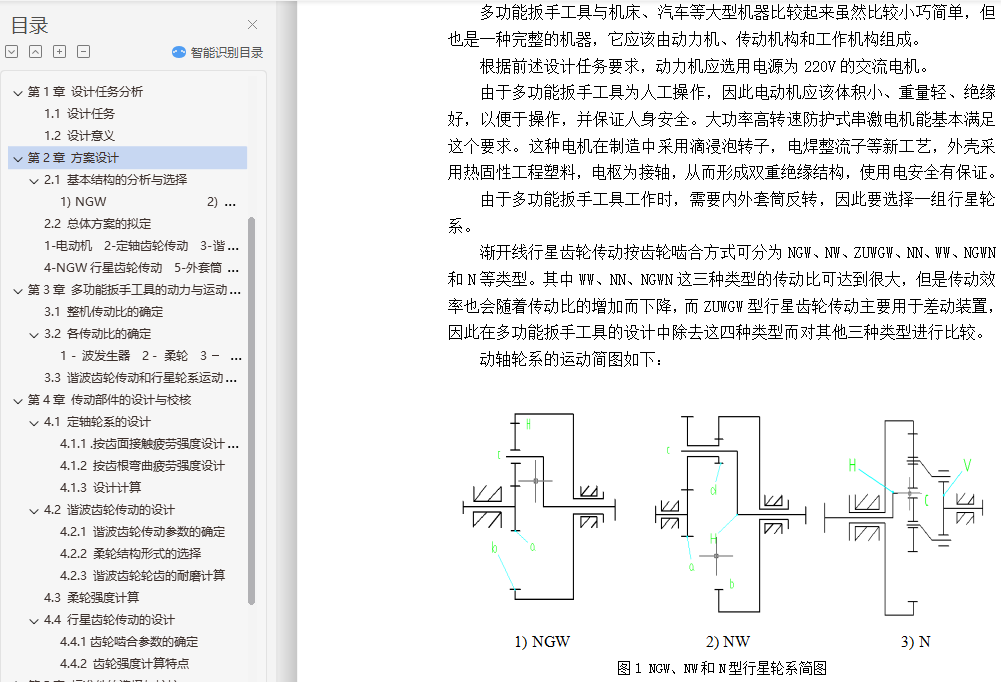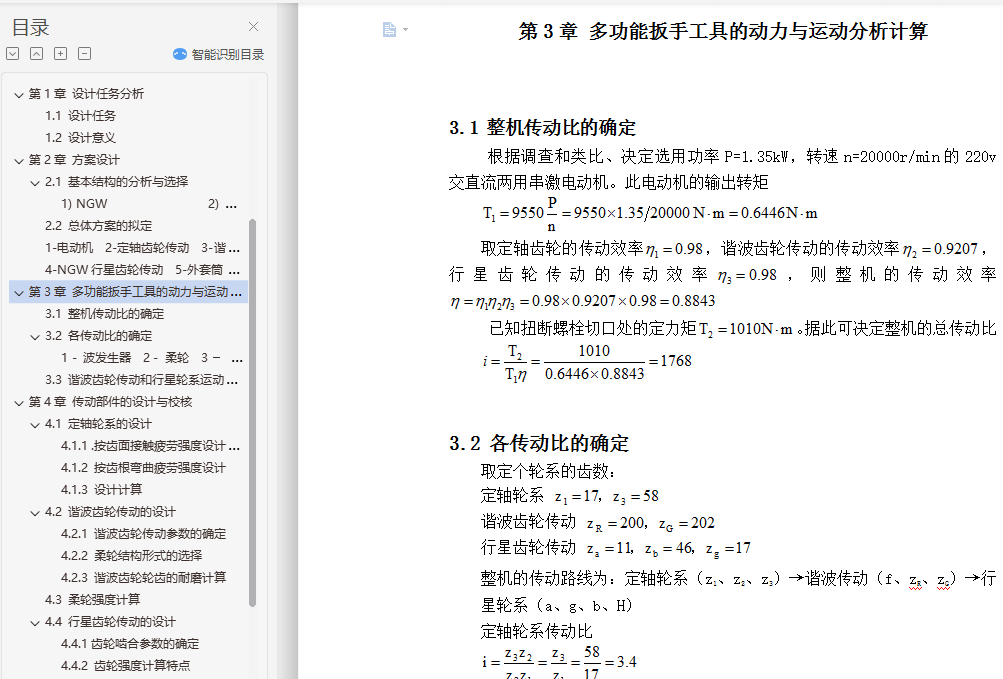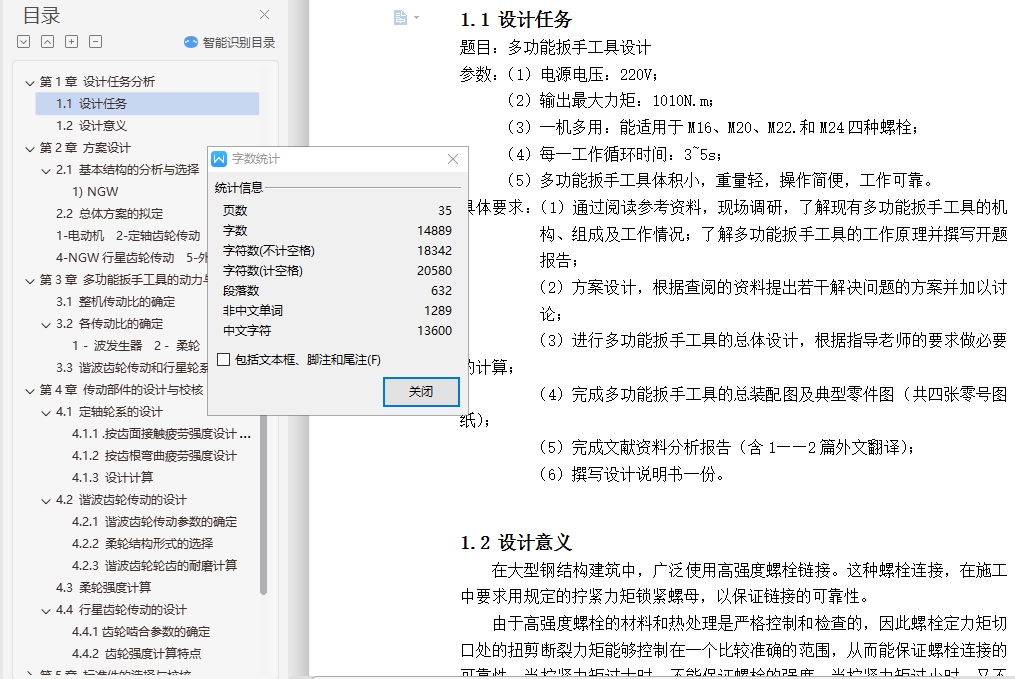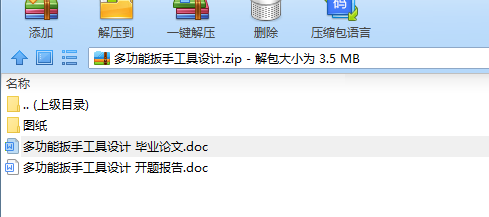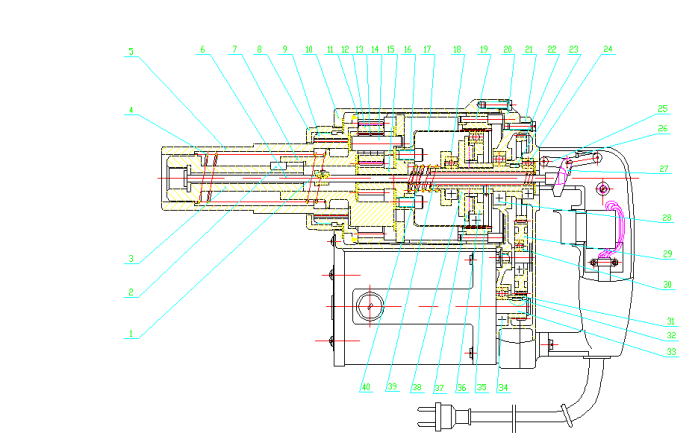多功能扳手工具设计
[摘要] 通过对普通扳手使用特点的分析,指出其存在的诸多不足之处。提出既能快速,也能增力拆、装螺栓或螺母;既适用于常态,也适用于需较大力矩的状态;且手柄能连续回转的多功能扳手的设计思路。论述多功能扳手主要设计参数齿轮齿数、模数和传动轴轴径的计算方法,阐述了其主要结构形式和零部件的组成。新型多功能扳手在实际生产中的使用结果表明,完全达到高效、省力和拓展使用范围的目的。由于高强度螺栓的材料和热处理是严格控制和检查的,因此螺栓定力矩切口处的扭剪断裂力矩能够控制在一个比较准确的范围,从而能保证螺栓连接的可靠性。当拧紧力矩过大时,不能保证螺栓的强度;当拧紧力矩过小时,又不能保证连接的可靠性。因此这种螺栓连接,在施工中要求用规定的拧紧力矩锁紧螺母,以保证链接的可靠性。另外,高强度螺栓往往成批使用,并且工作的环境也比较坚苦,如果是用普通扳手进行定力矩拧紧,工人拧紧螺母的过程中会有很多不便,工作效率也会很低。综合以上三点原因,在拧紧高强度螺栓时,我们采用多功能扳手工具代替手从扳手进行拧紧。多功能扳手工具以220V交流电源为动力进行工作,可以保证每个螺栓的拧紧力都在规定的范围内,同时,采用多功能扳手工具代替手动扳手可以大大提高螺栓拧紧的速度,提高工人的工作效率,改善工人的劳动强度。
[关键词] 多功能 快速 省力 扳手
Design of multifunctional wrench tool
[Abstract]Based on the analysis of the characteristics of ordinary wrench, many shortcomings are pointed out. The design idea of multifunctional wrench which can not only quickly, but also increase the force to remove, install bolts or nuts, is suitable for both normal and large torque, and the handle can continuously rotate is put forward. This paper discusses the calculation method of gear tooth number, modulus and shaft diameter of multi-function wrench, and expounds its main structural forms and components. The application results of the new multifunctional wrench in practical production show that the purpose of high efficiency, labor saving and expansion of application range is achieved completely. Because the material and heat treatment of high strength bolts are strictly controlled and Therefore, the torsional shear fracture moment at the fixed moment of the bolt can be controlled in a more accurate range, so as to ensure the reliability of the bolt connection. When the tightening torque is too large, the strength of the bolt can not be guaranteed, and when the tightening torque is too small, the reliability of the connection can not be guaranteed. Therefore, this kind of bolt connection requires the specified tightening torque to lock the nut in order to ensure the reliability of the link. In addition, high strength bolts are often used in batches, and the working environment is also relatively difficult. If ordinary wrenches are used to tighten the torque, there will be a lot of inconvenience and low working efficiency in the process of tightening nuts by workers. Synthesis The above three reasons, when tightening the high strength bolt, we use the multifunctional wrench tool instead of the hand to tighten the wrench from the wrench. The multifunctional wrench tool works with 220V AC power supply as the power supply, which can ensure that the tightening force of each bolt is within the prescribed range. At the same time, the use of multifunctional wrench tool instead of manual wrench can greatly improve the speed of bolt tightening, improve the working efficiency of workers and improve the labor intensity of workers.
[Key words] Multifunctional, fast, labor-saving wrench
目 录
前 言 ……………………………………………………………………………1
第 1 章 设计任务分析 ……………………………………………………………2
1.1 设计任务 …………………………………………………………………2
1.2 设计意义 …………………………………………………………………2
第 2 章 方案设计 …………………………………………………………………3
2.1 基本结构的分析与选择 …………………………………………………3
2.2 总体方案的拟定 …………………………………………………………5
第 3 章 多功能扳手工具的动力与运动分析计算 ………………………………………8
3.1 整机传动比的确定 ………………………………………………………8
3.2 各传动比的确定 …………………………………………………………8
3.3 谐波齿轮传动和行星轮系运动分析 ……………………………………9
第 4 章 传动部件的设计与校核…………………………………………………11
4.1 定轴轮系的设计…………………………………………………………11
4.1.1 .按齿面接触疲劳强度设计 ……………………………………11
4.1.2 按齿根弯曲疲劳强度设计………………………………………12
4.1.3 设计计算…………………………………………………………13
4.2 谐波齿轮传动的设计……………………………………………………14
4.2.1 谐波齿轮传动参数的确定………………………………………14
4.2.2 柔轮结构形式的选择……………………………………………15
4.2.3 谐波齿轮轮齿的耐磨计算………………………………………15
4.3 柔轮强度计算……………………………………………………………16
4.4 行星齿轮传动的设计……………………………………………………17
4.4.1 齿轮啮合参数的确定……………………………………………17
4.4.2 齿轮强度计算特点 ……………………………………………17
第 5 章 标准件的选择与校核……………………………………………………21
5.1 轴承的选择与校核………………………………………………………21
5.1.1 轴承的选择………………………………………………………21
5.1.2 轴承的校核………………………………………………………22
5.1.3 轴承的润滑方式…………………………………………………22
5.2 键的选择与校核…………………………………………………………22
5.2.1 键的选择…………………………………………………………22
5.2.2 键的校核…………………………………………………………22
5.3 圆柱螺旋压缩弹簧的设计………………………………………………23
第 6 章 多功能扳手工具中重要零件的材料……………………………………………27
结 论 ………………………………………………………………………………29
致 谢 ………………………………………………………………………………30
参 考 文 献 ………………………………………………………………………31
